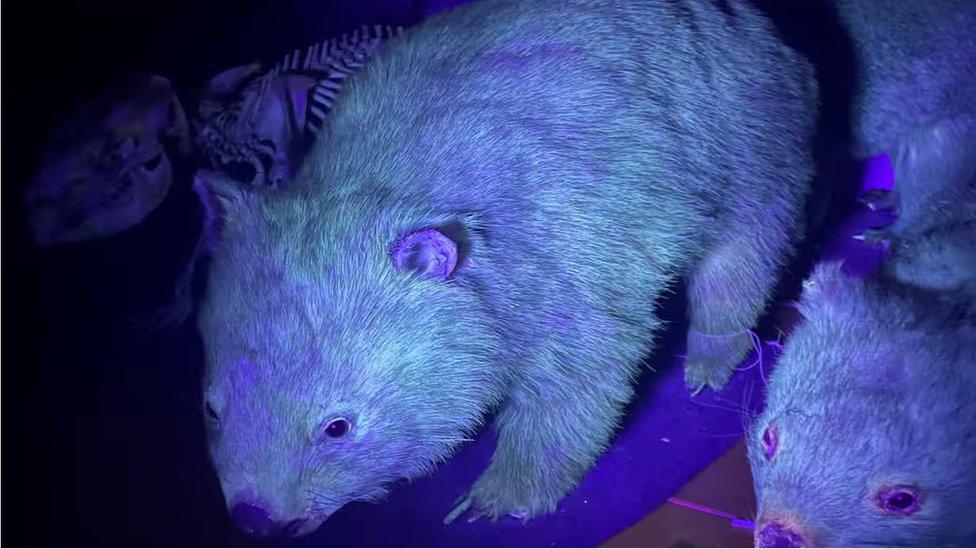Study finds birds-of-paradise emit light through their feathers
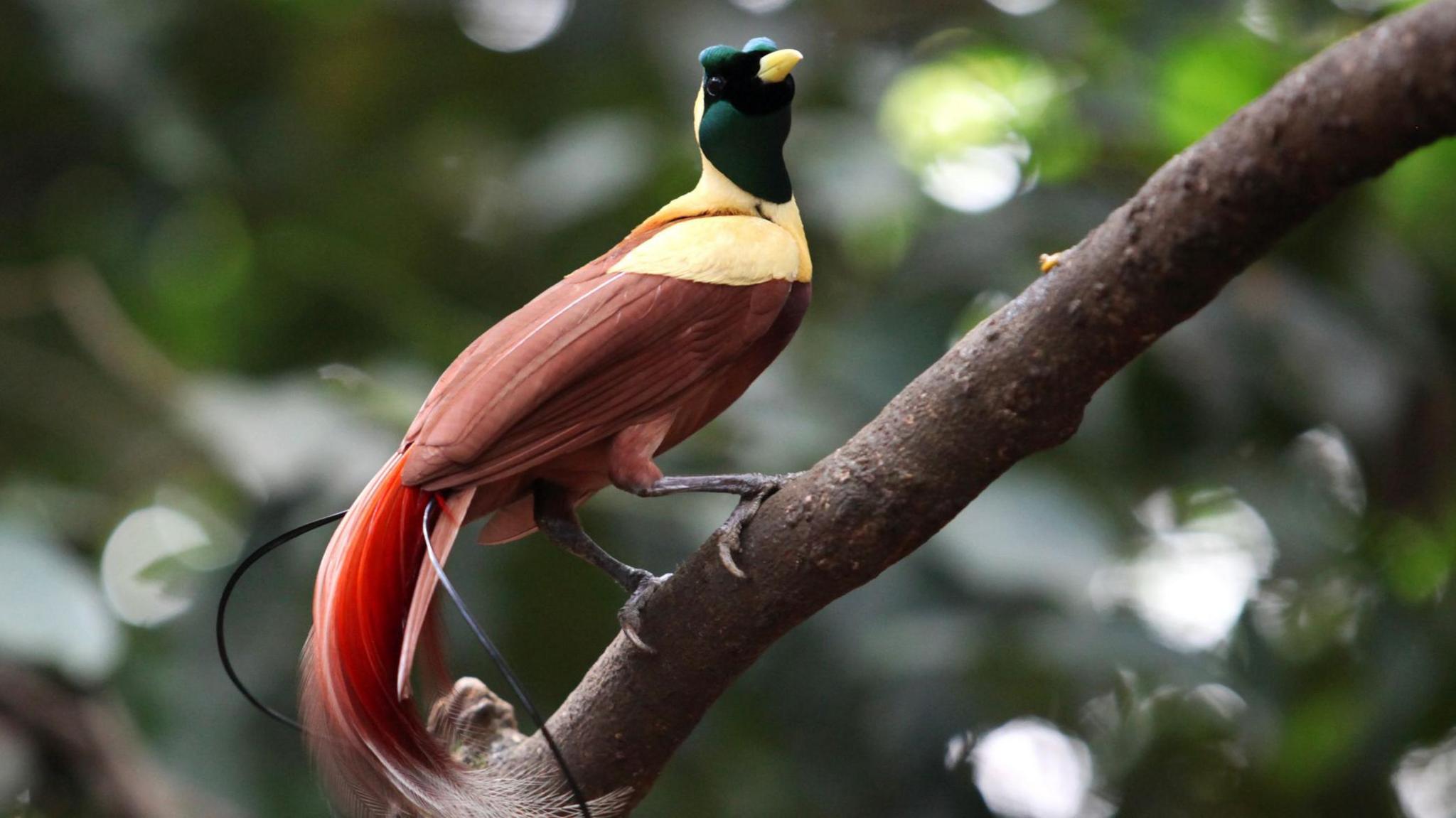
These birds are known for their bright colourful feathers
- Published
This species of birds are known as 'birds-of-paradise' and are famous for their bright and colourful feathers.
But now, new research has revealed why they are so dazzling - it's all due to something called biofluorescence.
Biofluorescence is when something, like an animal or a plant, absorbs light and then glows or shines in a different colour.
Carry on reading to find out more...
- Published3 July 2012
- Published12 April 2024
- Published29 September 2023
Most of the species are found in eastern Indonesia, Papua New Guinea, and eastern Australia.
Scientists discovered that 37 out of 45 species of birds-of-paradise absorb UV or blue light and then emit light at lower frequencies.
This means in the right light these biofluorescent areas on the birds may seem brighter, more vibrant or even a slightly different colour.
Dr Rene Martin from the American Museum of Natural History in New York who was the first author of the study said: "At a minimum, it would make these biofluorescent areas brighter – a yellow feather may be more green-yellow, a white feather may be brighter and slightly more green-yellow".
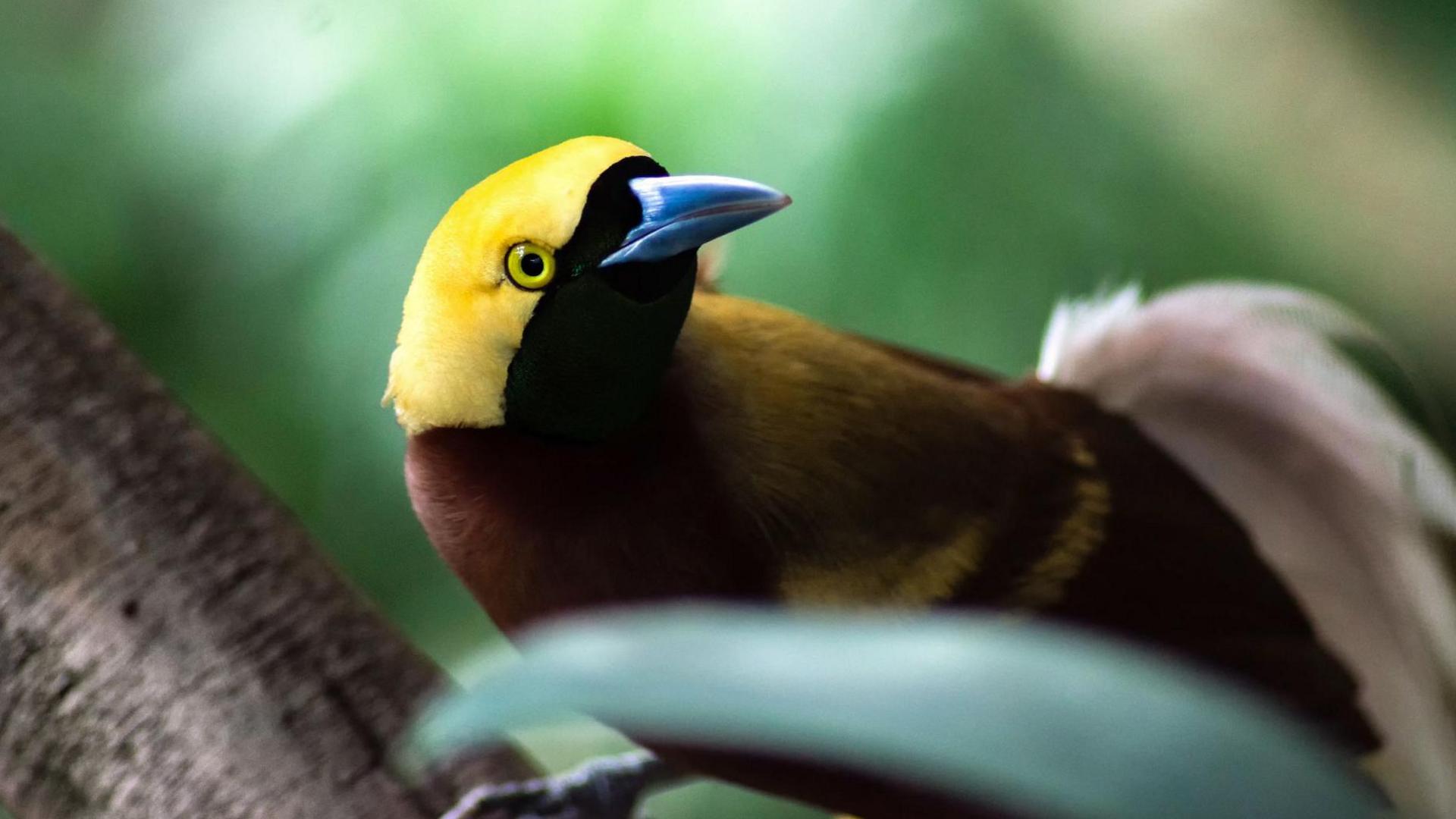
Biofluorescence makes the birds brighter and more eye-catching
In the study researchers examined the effect of both blue and UV light in both male and female birds-of-paradise.
They found that biofluorescence occurs in males of many species, especially on areas like the head, neck, and tail feathers.
At least 36 species of females also showed biofluorescence, but instead on areas like their chests and bellies.
Scientists believe the biofluorescence makes the birds brighter and more eye-catching to each other.
- Published28 June 2021
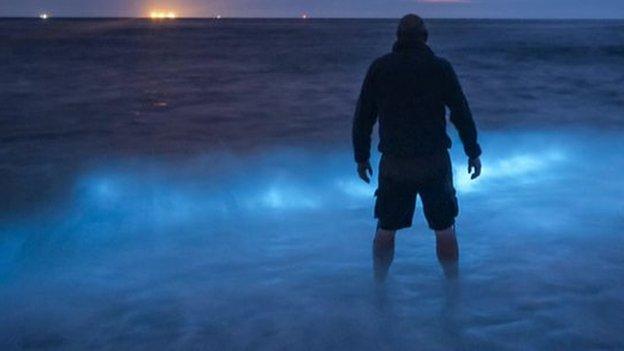
- Published24 April 2024
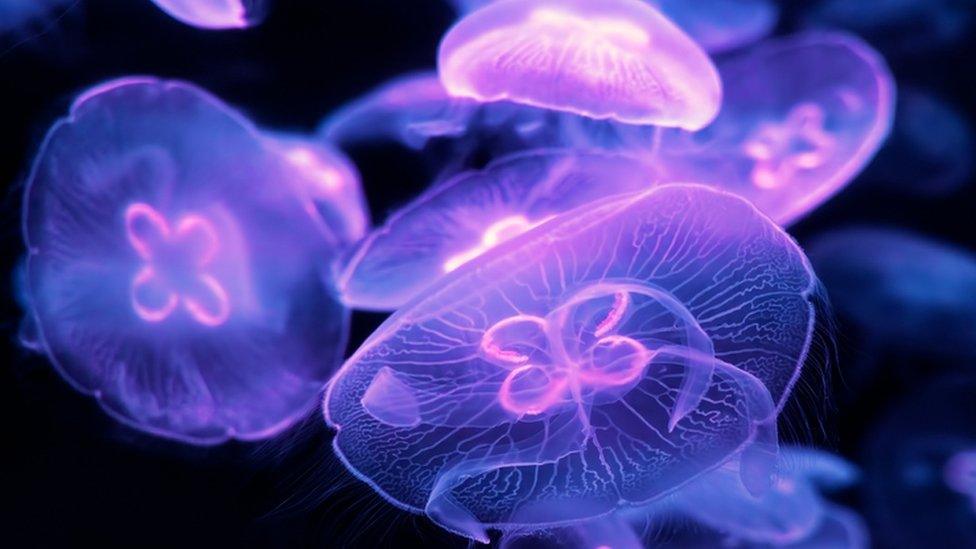
- Published6 October 2023
